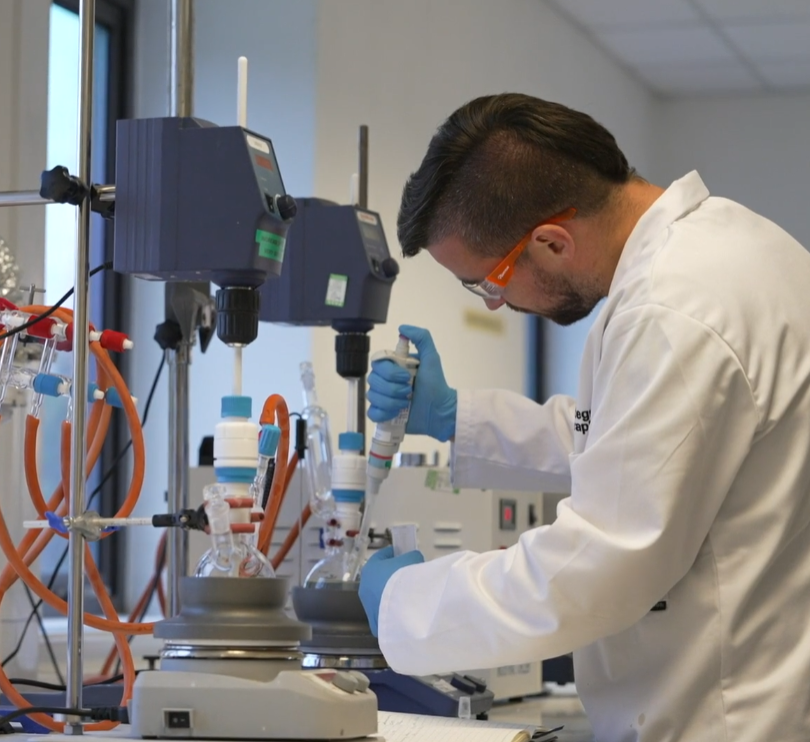Scientists may have finally found a solution to effectively harvesting energy from humans into electrical energy.

Image Credit: Integrated Graphene
Researchers from the Institute of Thin Films, Sensors and Imaging (ITFSI) from the University of the West of Scotland (UWS) explored the use of the 3D graphene foam material Gii™ by Integrated Graphene as an active layer in an energy generator (known as a TENG).
The investigation aimed to transform mechanical energy wasted in nature into electrical energy that could be used to power small electronic devices and sensors in the booming global market for Internet of Things (IoT) technologies. The research, published in ScienceDirect, shows that the force of a human footprint on a pressure-sensitive mat, equipped with Gii-TENG sensors, can produce enough energy to anonymously identify people entering or leaving a room. As well as providing a low-cost and energy-efficient solution to monitoring building occupancy, the mats could also help to optimize energy resources by, for example, controlling room temperature upon entrance or exit.
The findings of this study will be of particular interest to schools and universities who could employ the technology to link the measurement of room occupancy to a ventilating system and a CO2 monitor, reducing the volume of CO2 which has been shown to reduce the ability to focus.
Mechanical energy is one of the most abundant and versatile energy sources available in nature. For around 20 years, triboelectric nanogenerators (TENGs) have been investigated as a technique for converting mechanical energy from our daily actions into usable electrical energy which can power both small IoT electronic devices and sensors but also more power-hungry items such as electric cars and drones.
However, efforts to develop a commercially viable TENG have, to date, been hampered by issues relating to low durability, limited energy output and inefficiency. The addition of Gii™ to TENG has opened up a whole new world of possibilities due to its unique properties including high surface area, porosity, light weight, and superior electrical properties. The energy autonomous, pressure sensing nature of Gii-TENG has the potential to transform various aspects of our lifestyles, society and economy including, for example:
- Harvesting energy from sports such as golf, running, and tennis to power smart devices which generate performance data
- Self-powered wearable biosensors for early diagnosis of health conditions including cardiovascular disease, gout and diabetes.
- Harvesting energy from cars on roads and people walking in the creation of smart cities
- A smart energy solution for industry 4.0
- Extending the hovering time of drones, allowing transportation of parcels - and even people in the future - for longer distances and longer times
Marco Caffio, CSO, Integrated Graphene said: “The possibilities of Gii-TENG are endless, with the potential to push the limits of technology beyond human expectations. With the number of IoT devices interlinked worldwide forecast to reach 100 billion by 2030, there is a clear need for new sustainable energy sources and technologies which can meet the power demand from our reliance on technology for work, life and play. Our Gii-TENG platform could potentially prevent the constant replacement of batteries in trillions of devices, and reduce the utilisation of wires, making the IoT technology of the near future to be wireless and energy autonomous. We’re excited by its potential and believe it could play a key role in society’s journey towards a smart world.”
Dr Carlos Garcia Nuñez, Lecturer, School of Computing, Engineering and Physical Sciences (CEPS), UWS, said: “We’re very excited by these findings. Through our work with Integrated Graphene, we have proven that using Gii-material - an advanced type of three-dimensional graphene (3DG) foam - as an active layer in triboelectric nanogenerators (TENGs) can work as a reliable and cost-effective energy harvesting power source for autonomous sensors and electronics. This discovery has enormous potential for the booming global Internet of Things (IoT) industry. Given the global need for alternative sources of green energy, Gii-TENGs can potentially provide a sustainable source of power for the multitude of small electronic devices which we use in our everyday lives. Bringing us one step closer to realising a greener and more energy-abundant future.”